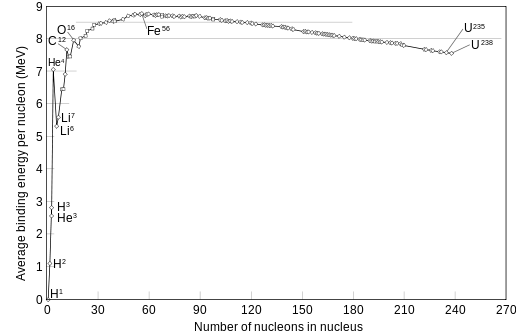Every day observations work with classical physics. If you have 1 gold coin with a mass m, 100 gold coins will have a mass 100m. All the economies of humanity work on the conservations of mass, from wheat production to oil wells mass does not change, is additive and is conserved.
Nuclear reactions were a surprise and are no longer in the framework of classical physics. One needs quantum mechanics and special relativity to really understand what is going on.
Chemists by the year 1789 , long before any special relativity and quantum mechanics appeared, discovered that they could organize the chemical elements . The periodic table of elements shows the A number , which is the atomic weight of the element, i.e. the atomic weight divided by the mass of hydrogen, and Z, the number of positive charges equal to the electron number in the nucleus. They found out that there was a binding energy per nucleon
At the nuclear level, nuclear binding energy is the energy required to disassemble a nucleus into the free, unbound neutrons and protons it is composed of. It is the energy equivalent of the mass excess, the difference between the mass number of a nucleus and its true measured mass.Nuclear binding energy derives from the nuclear force or residual strong force, which is mediated by three types of mesons.

This makes sense only within the context of special relativity, where mass is not a conserved quantity.
You ask:
I mean mass of (what) is converted into energy. Please explain.
An example for fusion: Deuterium and Tritium will release the difference in the binding energies of the end products into the kinetic energy of the end products.
Deuterium + Tritium → Helium + neutron + 340,000,000,000 Joules per gram
The masses of (deuterium+ tritium) will be larger than the mass of Helium +neutron, because mass is not a conserved quantity at this level, it is connected directly with energy according to the special relativity equations .

